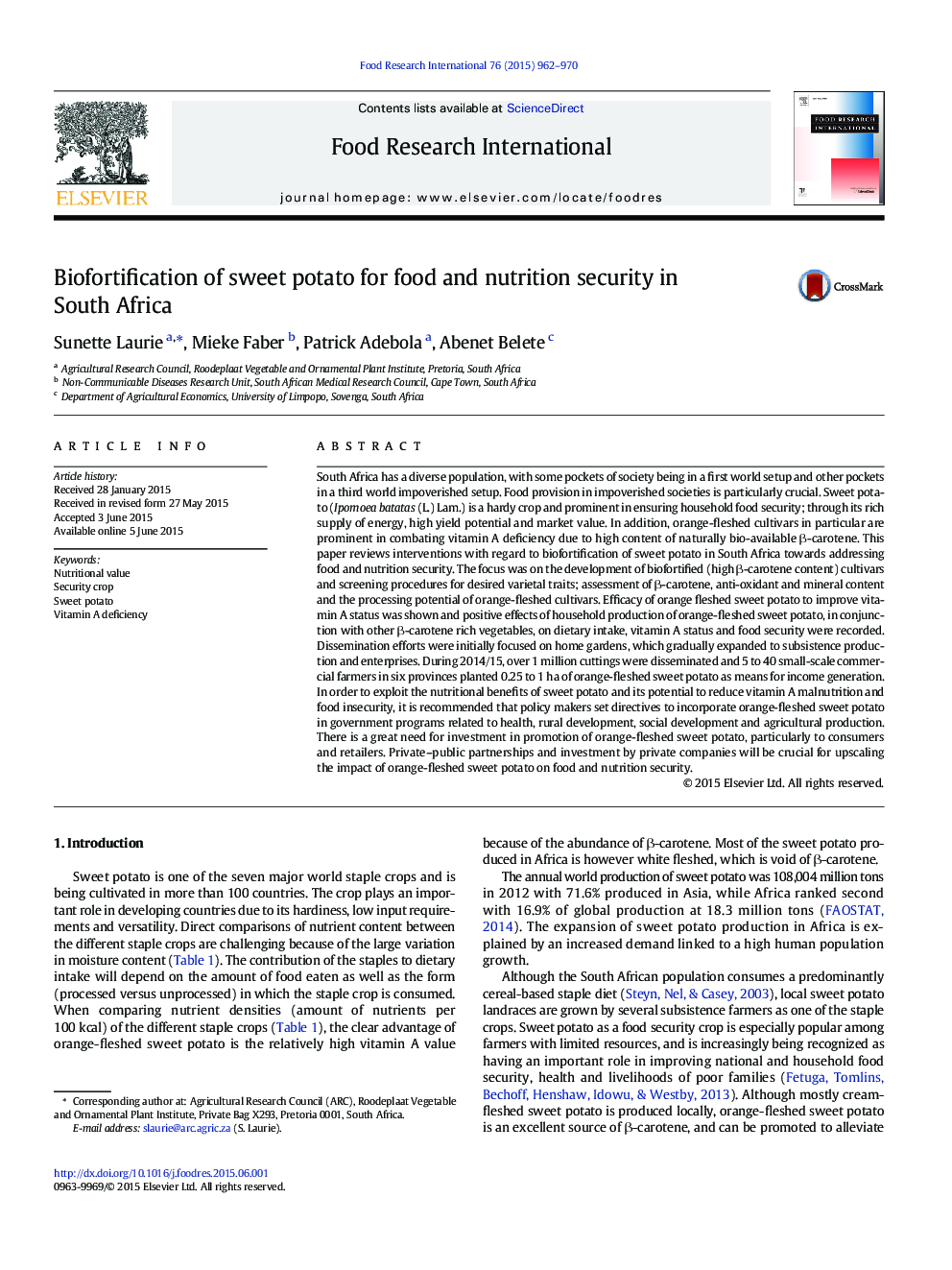| کد مقاله | کد نشریه | سال انتشار | مقاله انگلیسی | نسخه تمام متن |
|---|---|---|---|---|
| 4561277 | 1330639 | 2015 | 9 صفحه PDF | دانلود رایگان |

• Sweet potato cultivars with high β-carotene content and appropriate agronomic traits were bred locally
• A 125 g cooked portion provides > 10%, Zn, Fe, Mg and Vitamin C for 4–8 year old children
• Promotion of orange-fleshed sweet potato, and other β-carotene rich vegetables, improved dietary intake and vitamin A status
• An estimated 33 ha of orange-fleshed sweet potato were planted during 2014/15
• Enterprises produce orange-fleshed sweet potato for income generation
South Africa has a diverse population, with some pockets of society being in a first world setup and other pockets in a third world impoverished setup. Food provision in impoverished societies is particularly crucial. Sweet potato (Ipomoea batatas (L.) Lam.) is a hardy crop and prominent in ensuring household food security; through its rich supply of energy, high yield potential and market value. In addition, orange-fleshed cultivars in particular are prominent in combating vitamin A deficiency due to high content of naturally bio-available β-carotene. This paper reviews interventions with regard to biofortification of sweet potato in South Africa towards addressing food and nutrition security. The focus was on the development of biofortified (high β-carotene content) cultivars and screening procedures for desired varietal traits; assessment of β-carotene, anti-oxidant and mineral content and the processing potential of orange-fleshed cultivars. Efficacy of orange fleshed sweet potato to improve vitamin A status was shown and positive effects of household production of orange-fleshed sweet potato, in conjunction with other β-carotene rich vegetables, on dietary intake, vitamin A status and food security were recorded. Dissemination efforts were initially focused on home gardens, which gradually expanded to subsistence production and enterprises. During 2014/15, over 1 million cuttings were disseminated and 5 to 40 small-scale commercial farmers in six provinces planted 0.25 to 1 ha of orange-fleshed sweet potato as means for income generation. In order to exploit the nutritional benefits of sweet potato and its potential to reduce vitamin A malnutrition and food insecurity, it is recommended that policy makers set directives to incorporate orange-fleshed sweet potato in government programs related to health, rural development, social development and agricultural production. There is a great need for investment in promotion of orange-fleshed sweet potato, particularly to consumers and retailers. Private–public partnerships and investment by private companies will be crucial for upscaling the impact of orange-fleshed sweet potato on food and nutrition security.
Journal: Food Research International - Volume 76, Part 4, October 2015, Pages 962–970